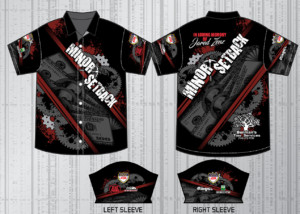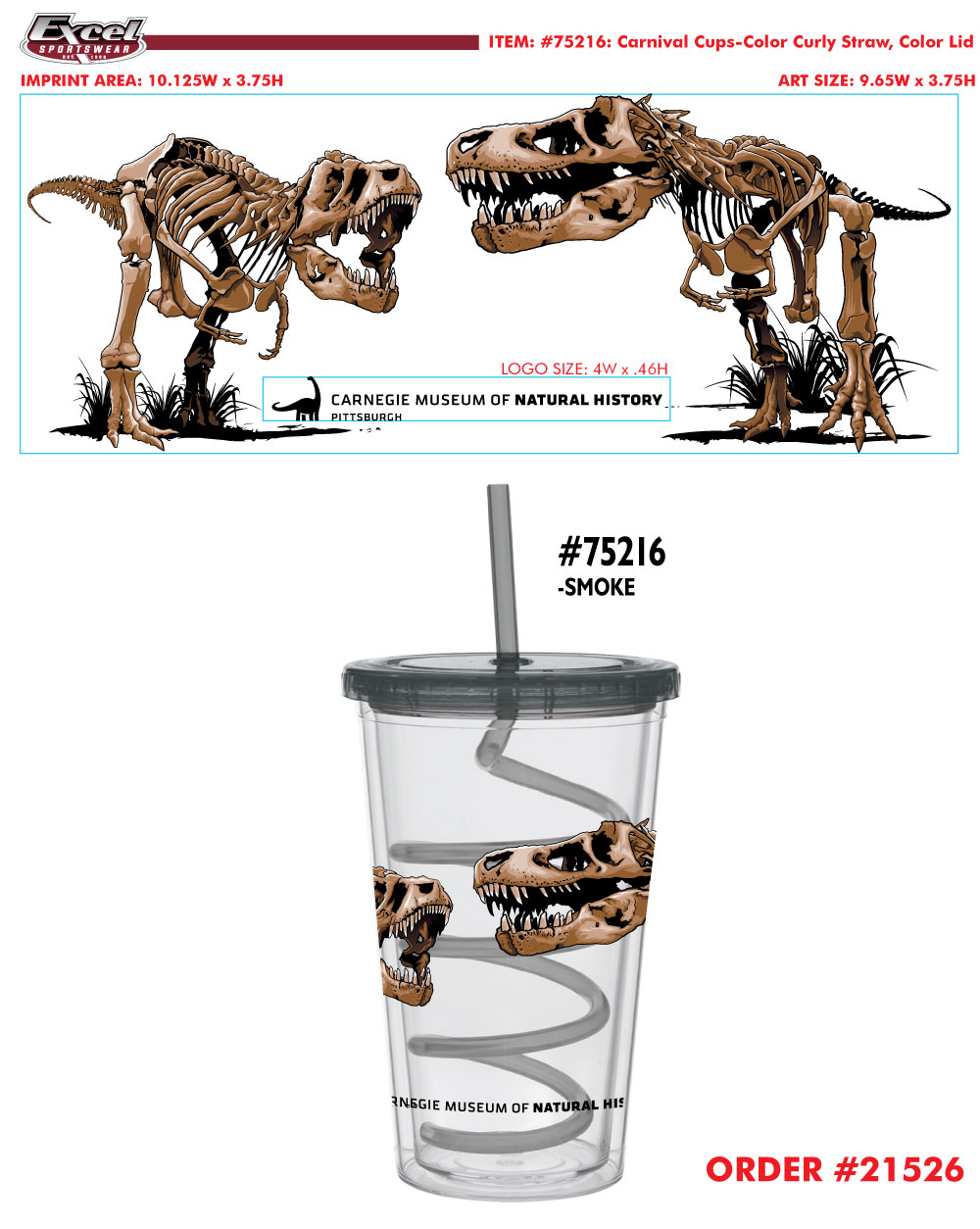Dye Sublimation: Another option for printing t-shirts
Are you in need of perfect, cost-effective promotional printing garments?
Then perhaps dye sublimation is the ideal option for you.
Dye sublimation is a process that has been around for some time. It was initially developed to print on plastic parts and items for awards and specialty printed items for industry needs. The system is different from most other printing methods since the pigments that are used are specifically designed to bond to plastics or polyesters. The use on polyesters is key here, as we’ll see a bit later.
Before proceeding, however, let’s take a few minutes to review the other most popular printing methods when it comes to printing apparel.
These include screen printing, direct-to-garment (DTG) and heat transfer.
Screen printing is the process of pulling a layer of ink over a screen to produce a design. A special screen has to be made for each design, which means there should be a sizable quantity of the same design to be cost-effective. To compensate for the setup times needed for screen printing, many screen-printing shops will have a minimum order requirement to make jobs worthwhile.
Depending on how big the design is, the ink quality, how much squeegee pressure is applied, the number of strokes and the mesh count, you can print from 200 to as many as 500 t-shirts with just a gallon of printing ink.
Moreover, screen printing inks are thicker than other printing methods, allowing them to last longer and produce more true-to-life colors.
DTG is pretty much like using a printer to print on fabric. Because it works like a printer, it is best suited for designs or artwork considered too complex for printing techniques such as silk screening.
Finally, heat transfer involves laying sheets of transfer material on top of garments to then be heat pressed in order to permanently apply custom graphics to garments.
The beauty of heat transfer is that it works on different materials and fabrics and literally creates no mess in the process.
So, that begs the question, why should I opt for dye sublimation printing on my next order of t-shirts when I already have a couple of good options?
Below are examples of some Dye Sublimation Shirts that we have created.
Let’s look at what precisely the dye sublimation method is.
Sublimation printing is where the printer cleverly uses the sublimation process to dye a substrate (polyester fabrics or other items with a polymer coating or surface) by turning dyes from a solid into a gas and back into a solid again, while bonding with the polymer materials present in the substrate or product.
Dye sublimation works by penetrating the surface of the substrate with ink.
The method is widely used to digitally print onto a wide range of products, including fabrics, garments, mugs and other ceramics, wooden items, metal items, glass products and more.
First, the printer prints dye-based inks onto sublimation paper, a special paper that holds the dye in place ready to be released during the sublimation process.
This printed sheet is laid on top (face down) of the polyester fabric or polymer coated product and is heat pressed. When the sublimation process occurs, the dye molecules that were a held in the sublimation process turn directly into a gas and bond with the polymers present in the fabric or the polymer coating on the blank product.
Because of the chemistry involved with these dyes, the dye actually becomes part of the substrate that it’s fused to. The heat not only transforms the dye to gas, but it also expands the spores of polyester or polymers and allows the gas to be drawn into the pores.
Once the substrate cools again, the pores close and allow the dye to become solid, permanently embedded in the fabric or polymeric material.
Dye sublimation printing yields beautiful and permanent colors that are embedded in the substrate or fabric rather than printed on the surface, images on fabric won’t fade or crack even after multiple times in the washer. Images on hard substrates will not chip, peel or scratch.
Did you know the word sublimation is from the Latin word sublimare, meaning “raised to a higher status”? All the way to its roots, sublimation printing, allows for your images and creativity to rise to the top and reach its peak performance.
So, what does all this all mean to you, the t-shirt buyer?
There are a number of benefits to the dye sublimation process:
- Customization is easy. Since each garment is printed from its own transfer as opposed to en mass on the same set of screens, sublimation makes it considerably easier to enhance each garment with individual customization. Adding names, numbers or other personal touches to a garment is as simple as creating a new file.
- Lighter hand. The characteristics of sublimation mean that prints are never heavy or dense. Dye does not build up on the fabric. Consequently, the garment is unaffected by this method, apart from the addition of your art.
- Images are high quality. Sublimation dyes present extraordinarily brilliant color when applied to polyester fabrics. The sublimation process applies the ink as vapor, as opposed to traditional print methods that lay down colors in dot patterns that result in white spaces in between the dots that can lessen the quality of the image. Dye sublimation creates graduation around the edge of the pixels creating a much smoother, more natural image. Truly continuous tones can be achieved that is the equivalent to actual photographs!
- Whole garment printing. Did you know that dye sublimation is also known in some quarters as “All-Over -Printing”? Although you can only print on white garments (see just below), you can choose to have an entire garment printed. (Though it is a bit more expensive). This means not only can you transform your white garment to any color of your choosing, but you could also cover its exterior with most any image you want.
- Toughness. Images are permanent. There is no cracking or peeling with a sublimated print. Sublimation garments are extra durable because the dyes are embedded into the garment’s fabric. The embedded dye is fused with the fabric and becomes as strong and durable as the fabric used. Garments will look great, wash after wash.
- Great for uniforms. Dye sublimation decorated apparel is bright, bold, big and colorful. Sublimation printing for uniforms would be a great idea where you want to protect your branding image as the uniforms look great for a long time.
- Eco-friendly. Dye sublimation is extremely “environmentally friendly” when compared to traditional screen printing, where the screen preparation, printing and clean-up uses mass amounts of water and chemicals. Moreover, no toxins are employed in dye sublimation, protecting both workers and the environment.
Okay, we know what you’re thinking. This is all great so far. “What’s the catch?” Well, the truth is, sublimation does have some restrictions.
- White/light garments only. Sublimated colors blend with the color on which they are printed. If you were to put a piece of dark colored paper into your printer and try to print on it, you wouldn’t see the images, and it’s the same with sublimation. Accordingly, the best outcomes are realized from printing on white garments!
- Polyester garments only. You may recall in our introduction; we wrote that “polyester” is a key? Well, that’s because the sublimation method only works on polyester garments. The problem with natural fibers like cotton is that they don’t open and close like the polymer-based fibers. Because they don’t open or close but are porous, when the dye turns gaseous and passes through the fibers, it binds to the surface and not into the fibers. If turn, if you wash the fabric, the dye will simply come back out. But, not to worry.
- Today’s polyester garments aren’t the weighty, watertight garments of the 70s that one might have in mind. Most modern performance fabrics, moisture-wicking fabrics and the like, are being made in sublimation-friendly fabrics. This includes even cotton-like textured garments so popular today. That makes it the perfect printing technique for running tops, vests, shirts and other polyester sports clothing that requires a soft print finish.
Beyond t-shirts and mugs
When we talk about dye sublimation printing, products like t-shirts, mousepads, mugs, and ceramic tiles are more likely to come to mind. These days, however, sublimation printing is taking on a more innovative and greater significance as it bursts onto large-format fabric applications.
Picture yourself sitting at a blackjack table in Vegas, taking in a performance in at the Benedum Theater, checking the cosmetic counter at Macy’s or strolling through a Carnegie Museum exhibit. If you stop and take a look around, you might detect that the graphics surrounding you or adorning the table in front of you are fabrics printed with dye sublimation technology.
Sublimation printing has grown into a significant industry over the last 25 years and has filled a previous gap in the market for high-quality, short-run printing of t-shirts and other promotional items.
Sublimation transfers were printed on commercial offset printing presses during the 1960s and 1970s, until the advent of the personal computer and inkjet printer in the 1980s. The development of sublimation dyes for inkjet use quickly followed.
Changing from traditional printing presses to inkjet printing meant that as few as one sublimation transfer could be produced effectively. Rather than long runs and high set-up costs associated with commercial printers, multi-color transfers could be produced as easily as a single color, which required four separate plates and printing operations using traditional methods.
Printing by sublimation has grown even more significantly since the 1980s. Improvements in dye color opacity and ease of transfer, combined with the type, quality, and quantity of products that can be printed by the process, guarantees sublimation will remain a viable process with a bright future.
Okay, have we piqued your interest in the dye sublimation process?
We invite you to stop by our production facility at your convenience. Take a look at some samples printed via the sublimation process.







































